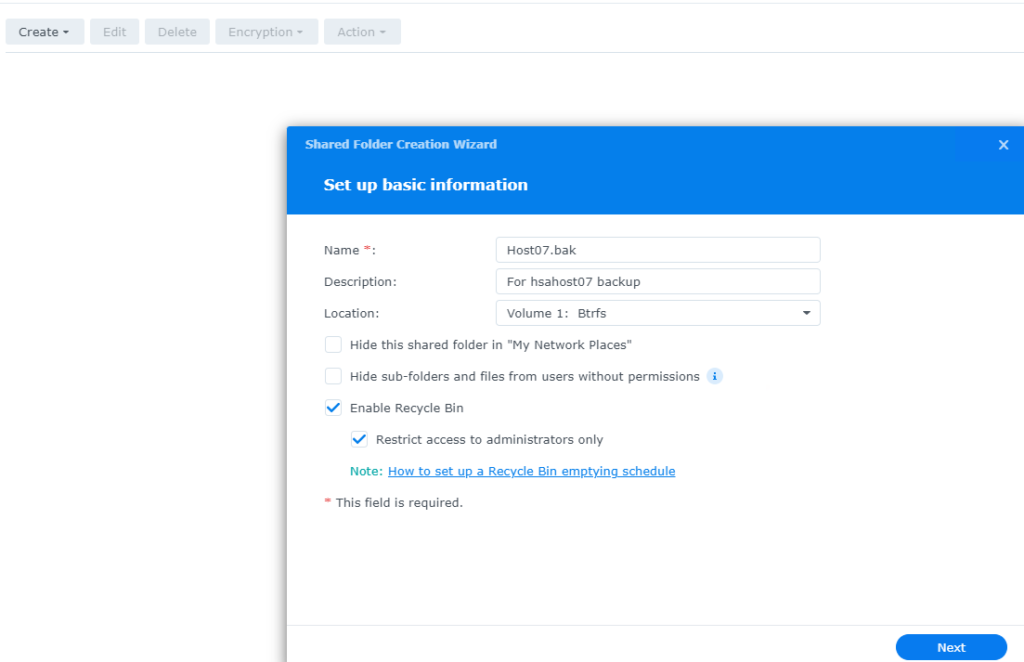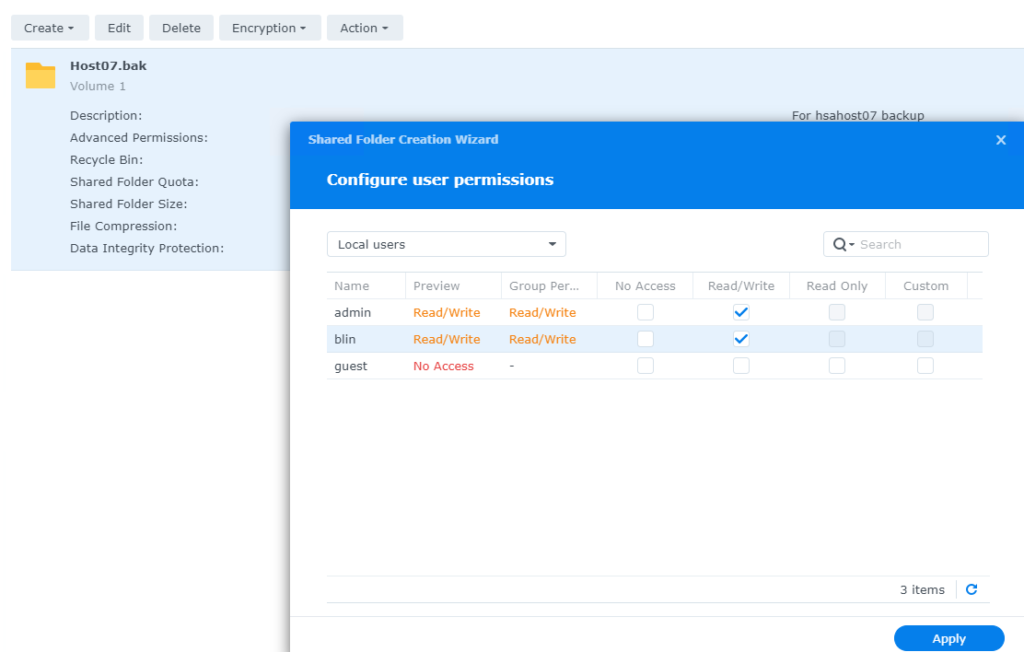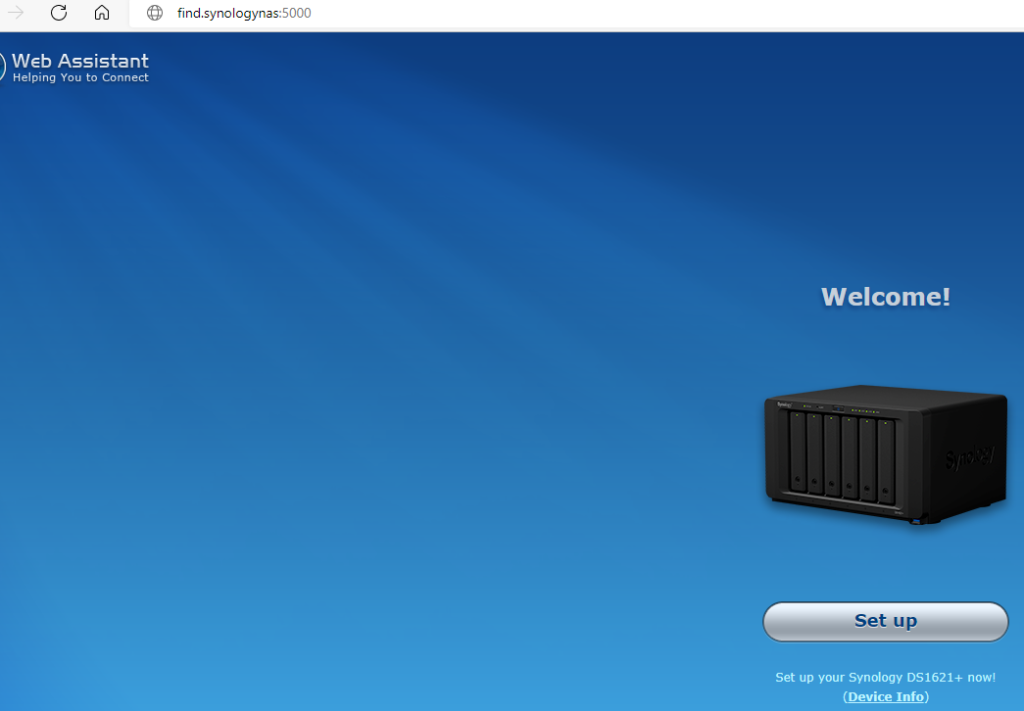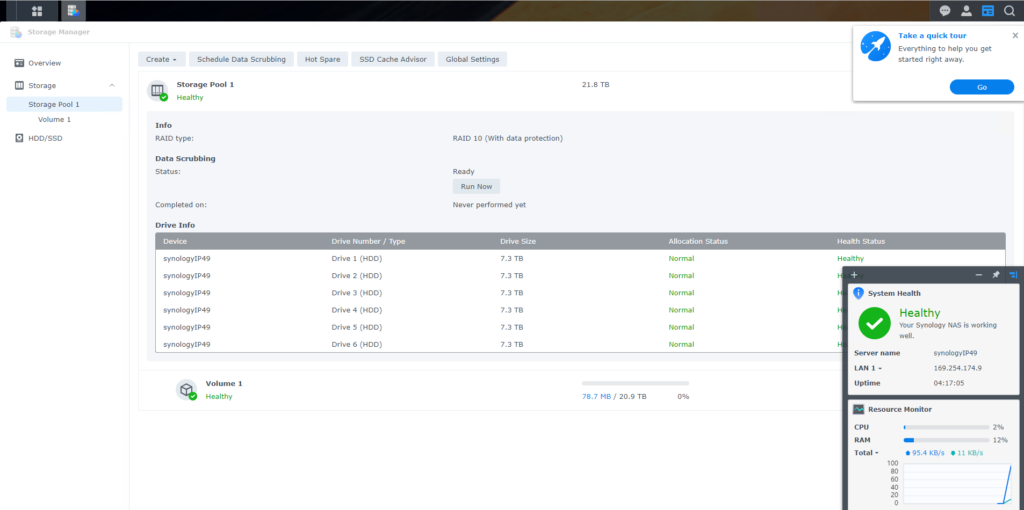Note: Before expanding a volume, you should have free space. If not, you may want to delete other volumes. Please refer to this post:
How to delete a Volume on QNAP
- Login QNAP web utility
- Click on Storage & Snapshots

3. Click on Storage and then Storage/Snapshots.

4. Select a volume you want to extend and then click Manage.

5. Click Action and then Expand Pool.

6. The Volume Resizing Wizard opens and keep the default selection. Click Next.

7. Specify a new capacity for the volume. Select Disks, in our example all. Select RAID type, for example RAID 10.
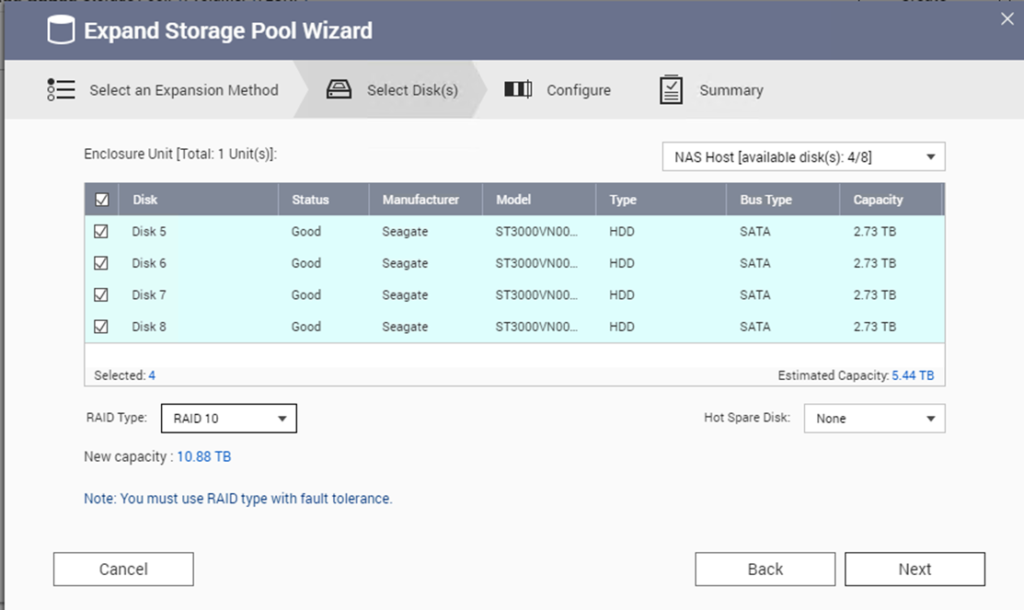
8. Review the expand summary

9. In the popup warning, click on Expand to process.

10. It is processing the expand.

11. Completed.
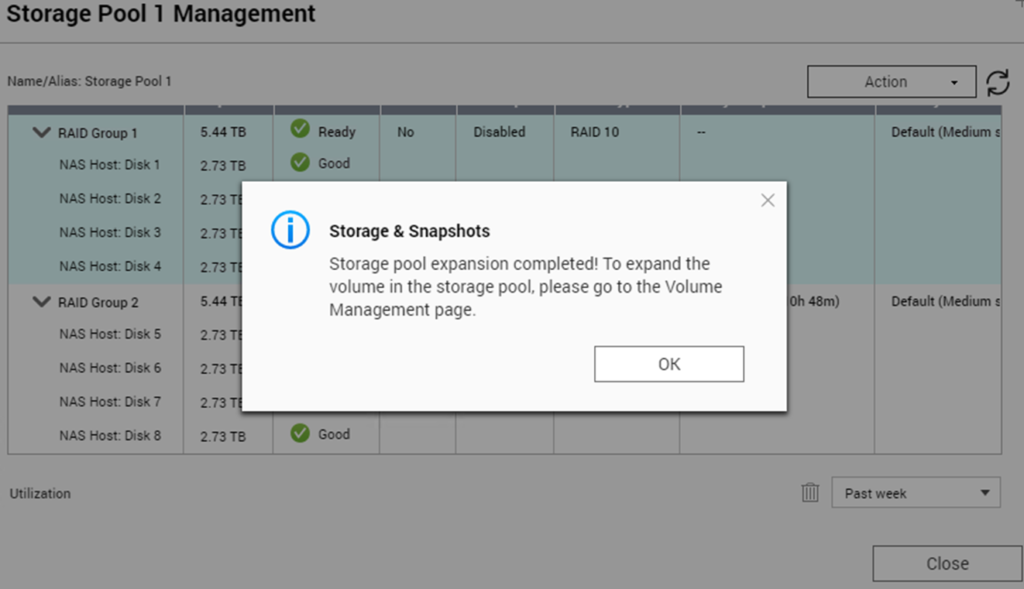
Storage Pool 1 Management shows

It is syncing.

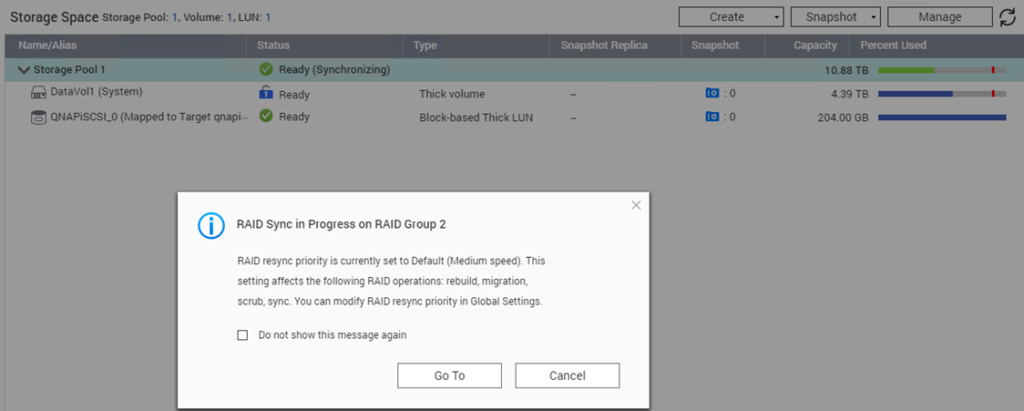
Please view this step by step video:







































